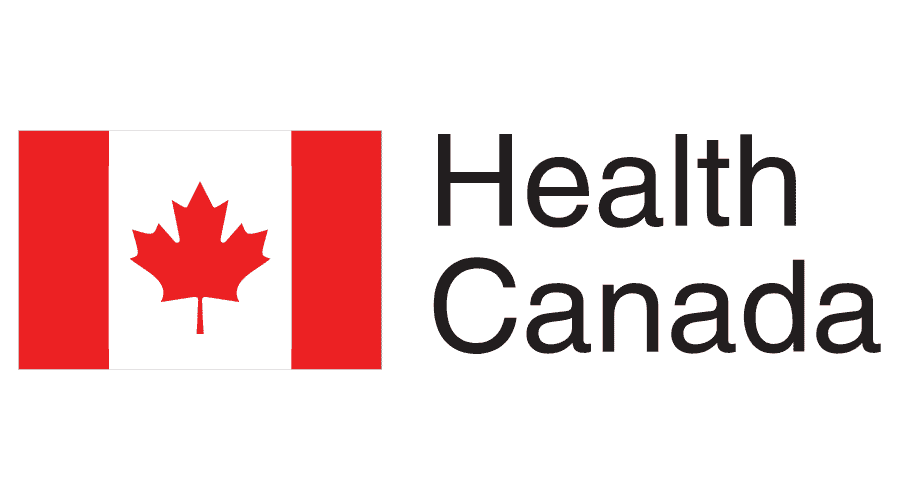Health Canada: The pharmaceutical industry is a vital component of healthcare systems worldwide, and in Canada, it is no different. To maintain the highest standards of safety, efficacy, and accessibility of pharmaceuticals, Health Canada plays a pivotal role. In this article, we will delve into Health Canada’s role in the pharmaceutical sector, highlighting its contributions to public health and the broader Canadian healthcare landscape.
In this article, we will embark on a comprehensive exploration of Health Canada’s pivotal role within the pharmaceutical sector. We will delve into the multifaceted responsibilities and functions undertaken by Health Canada, highlighting its unwavering commitment to public health and its indispensable contributions to the broader Canadian healthcare landscape. Health Canada serves as the vigilant guardian of pharmaceutical safety and accessibility, assuring that the medications Canadians rely on meet the highest standards of efficacy, quality, and safety.
This article will shed light on how Health Canada achieves these objectives, its involvement throughout the lifecycle of pharmaceutical products, and its tireless efforts to balance innovation and safety in the pursuit of better healthcare outcomes for all Canadians
Ensuring Safety through Rigorous Regulation

One of Health Canada’s most critical roles within the pharmaceutical industry is its relentless commitment to ensuring the safety of pharmaceuticals in the Canadian market. This commitment is exemplified through a rigorous regulatory process that encompasses the evaluation of pharmaceutical products in depth before they reach the hands of patients. Here, we will delve into the multifaceted aspects of how Health Canada accomplishes this crucial task:
Comprehensive Evaluation: Health Canada’s regulatory process starts with a comprehensive evaluation of every drug and medical device seeking approval for the Canadian market. This evaluation extends to examining all available data, including clinical trial results, pharmacological profiles, manufacturing processes, and quality control measures. Through this thorough scrutiny, Health Canada aims to assess the safety, efficacy, and quality of each product.Stringent Standards: Health Canada sets and enforces stringent standards that pharmaceutical products must meet. These standards are grounded in scientific research, expert opinions, and global best practices. They encompass a wide array of criteria, such as product formulation, labeling, packaging, and manufacturing practices. Adherence to these standards is non-negotiable, ensuring that only products that meet the highest safety and quality benchmarks are approved.Expert Review: Health Canada’s regulatory team consists of experts in various fields, including pharmacology, toxicology, chemistry, and medicine. These experts meticulously review all data submitted by pharmaceutical companies and often conduct their own analyses to validate the information provided. This multi-disciplinary approach ensures that decisions are based on a comprehensive understanding of the product’s potential benefits and risks.Clinical Trial Oversight: Health Canada closely monitors and oversees clinical trials conducted by pharmaceutical companies to gather evidence on a product’s safety and efficacy. This oversight ensures that trials are conducted ethically, with due consideration for patient safety and informed consent. It also involves the review of trial protocols, participant recruitment, and data analysis to detect any anomalies or safety concerns.Risk-Benefit Analysis: Central to Health Canada’s regulatory decisions is a rigorous risk-benefit analysis. This process involves weighing the potential risks associated with a pharmaceutical product against its expected therapeutic benefits. Health Canada ensures that the benefits substantially outweigh the risks before granting approval, making patient safety the paramount concern.- P
ost-Market Surveillance: Health Canada’s commitment to safety doesn’t end with product approval. It maintains a vigilant post-market surveillance system to continuously monitor the safety and performance of pharmaceuticals and medical devices in use. This ongoing monitoring helps detect and address any unexpected safety concerns or adverse events promptly. Regulatory Action: Should safety concerns arise at any stage of a product’s lifecycle, Health Canada takes swift regulatory action. This can include product recalls, warnings, label updates, or even suspension of approvals. This proactive approach ensures that any potential risks are mitigated, and patients are protected.
Post-Market Surveillance
Health Canada’s involvement doesn’t end with drug approval. It maintains a vigilant post-market surveillance system to monitor the safety and effectiveness of pharmaceuticals in use. This includes monitoring adverse events, conducting inspections of manufacturing facilities, and taking prompt regulatory action if safety concerns arise.
This proactive approach ensures that Canadians have continued access to safe and effective medicines. Post-market surveillance is a crucial aspect of Health Canada’s role in the pharmaceutical industry, ensuring that pharmaceuticals and medical devices continue to meet safety and effectiveness standards once they are available to the public. This phase of regulation is essential to promptly identify and address any emerging safety concerns or adverse events that may arise during real-world use. Let’s delve into the intricacies of Health Canada’s post-market surveillance efforts:
Ongoing Monitoring: Post-market surveillance is not a one-time event; it is an ongoing process that extends throughout a product’s lifecycle. Health Canada continuously monitors and collects data on pharmaceuticals and medical devices once they are in use, acknowledging that real-world conditions may reveal new information or previously unforeseen risks.Adverse Event Reporting: One of the key mechanisms for post-market surveillance is the collection and analysis of adverse event reports. Healthcare professionals, patients, and manufacturers are encouraged to report any adverse events or unexpected side effects associated with pharmaceuticals or medical devices to Health Canada. These reports are carefully examined to identify patterns or trends that may indicate safety concerns.Manufacturing and Quality Control: Post-market surveillance includes monitoring the manufacturing processes and quality control measures of pharmaceuticals and medical devices. Health Canada conducts inspections and audits of manufacturing facilities to ensure that products continue to meet the established quality and safety standards. This proactive approach helps prevent potential issues before they reach the market.Safety Alerts and Recalls: If significant safety concerns are identified through post-market surveillance, Health Canada takes prompt regulatory action. This can include issuing safety alerts to healthcare professionals and the public, requiring label updates to provide clearer safety information, or even ordering product recalls if necessary to protect patient safety.Signal Detection and Analysis: Health Canada employs advanced data analysis techniques to detect signals or potential safety issues. These signals may arise from statistical anomalies in adverse event reporting, changes in patterns of product use, or emerging scientific research. Detecting these signals early allows for timely investigation and risk mitigation.International Collaboration: Health Canada collaborates with other regulatory agencies around the world to share post-market surveillance data and information on safety concerns. This international cooperation helps identify global trends and facilitates a more comprehensive understanding of product safety.Patient and Healthcare Professional Engagement: Health Canada actively engages with patients and healthcare professionals to gather valuable insights into the real-world experiences with pharmaceuticals and medical devices. This engagement helps identify safety concerns and informs regulatory decisions.Transparency and Communication:Health Canada maintains transparency by providing timely information on safety concerns and regulatory actions. Clear communication with healthcare professionals and the public is essential to ensure that patients are well-informed about the products they use and any associated risks.
Quality Control and Manufacturing Standards
To safeguard the quality of pharmaceuticals manufactured in Canada, Health Canada sets and enforces strict standards and guidelines. These standards cover various aspects of pharmaceutical production, including manufacturing processes, quality control, and labeling. By ensuring that pharmaceutical companies adhere to these standards, Health Canada helps maintain the integrity of the supply chain and protects consumers.
Establishment of Stringent Standards: Health Canada sets and enforces rigorous standards for pharmaceutical manufacturing. These standards cover various aspects, including product formulation, manufacturing processes, packaging, labeling, and storage. They are designed to meet the highest levels of safety and efficacy.Good Manufacturing Practices (GMP):Pharmaceutical companies are required to adhere to Good Manufacturing Practices (GMP), a set of guidelines and quality assurance principles that govern the production of pharmaceuticals. GMP ensures that products are consistently produced and controlled to meet the quality standards appropriate to their intended use.Inspections and Audits: Health Canada conducts regular inspections and audits of pharmaceutical manufacturing facilities to assess compliance with GMP and other relevant regulations. These inspections are thorough and cover all aspects of production, including cleanliness, equipment maintenance, and quality control processes.Validation of Manufacturing Processes:Health Canada requires pharmaceutical manufacturers to validate their manufacturing processes to ensure consistency and product quality. This involves conducting studies and tests to confirm that processes consistently produce products meeting predefined specifications.Quality Assurance and Quality Control Departments: Pharmaceutical companies are mandated to have dedicated quality assurance and quality control departments. These departments are responsible for monitoring and maintaining product quality at all stages of production, from raw material sourcing to finished product release.Batch Record Keeping:Detailed batch records are maintained for each pharmaceutical product manufactured. These records include information on raw materials used, equipment calibration, manufacturing conditions, and quality control tests conducted during production. Health Canada may review these records during inspections to ensure compliance.Quality Testing and Analysis:Health Canada requires manufacturers to perform extensive quality testing and analysis on pharmaceutical products. This includes testing for potency, purity, stability, and other critical attributes. These tests help ensure that each product batch meets specifications and is safe for use.Stability Studies: Manufacturers are required to conduct stability studies to determine the shelf-life and storage conditions of pharmaceutical products. This ensures that products remain safe and effective throughout their designated lifespan.Labeling and Packaging Standards: Health Canada sets specific requirements for product labeling and packaging to ensure that information is accurate, clear, and accessible to consumers and healthcare professionals. These standards also include child-resistant packaging for certain medications.Recalls and Corrective Actions: In cases where quality control issues or manufacturing deviations are identified, Health Canada may issue recalls or require manufacturers to take corrective actions. These actions are taken to mitigate any potential risks to patient safety.International Harmonization: Health Canada actively participates in international efforts to harmonize manufacturing standards and regulatory practices. This collaboration ensures that Canadian pharmaceutical products meet global quality benchmarks and facilitates trade and cooperation with other countries.
Facilitating Timely Access to Medicines
Health Canada recognizes the importance of timely access to new and innovative medicines. To expedite this process, it collaborates closely with pharmaceutical companies, offering mechanisms to fast-track the review and approval of promising drugs, especially those addressing unmet medical needs. This collaboration helps patients gain access to cutting-edge therapies sooner.
International Collaboration
In an era of globalized pharmaceutical markets, international collaboration is paramount. Health Canada actively engages with regulatory agencies worldwide, such as the U.S. Food and Drug Administration (FDA) and the European Medicines Agency (EMA). This collaboration harmonizes regulatory standards, streamlines the global pharmaceutical industry, and ensures that Canadians have access to safe and effective medicines developed both domestically and abroad.
Generics and Affordability
Health Canada also plays a critical role in the approval of generic drugs, which are cost-effective alternatives to brand-name medications. The regulatory process for generics ensures that they are equivalent in quality, safety, and efficacy to their brand-name counterparts, contributing to affordability and accessibility of medicines for Canadians.
Pharmacovigilance
Health Canada operates a robust pharmacovigilance system to monitor and report adverse drug reactions and other safety concerns. By promptly identifying and addressing potential risks associated with pharmaceutical products, Health Canada helps protect the health and well-being of Canadians. Pharmacovigilance is a critical component of Health Canada’s efforts to ensure the safety of pharmaceuticals and medical devices in the Canadian market.
It is a systematic and science-based approach to monitoring and assessing the safety of these products, with the primary goal of identifying and minimizing potential risks and adverse effects. Let’s explore the various aspects of pharmacovigilance and how it contributes to safeguarding public health:
Data Collection and Reporting: Pharmacovigilance begins with the collection and analysis of data related to adverse drug reactions (ADRs) and other safety concerns associated with pharmaceuticals and medical devices. This data can come from a variety of sources, including healthcare professionals, patients, manufacturers, and clinical trials.Adverse Event Monitoring: Health Canada actively monitors adverse event reports submitted by healthcare professionals and the public. These reports detail unexpected side effects, adverse reactions, or any other safety concerns related to pharmaceutical products. Each report is carefully reviewed, and patterns or trends are identified to assess potential risks.Signal Detection: Pharmacovigilance employs advanced data analysis techniques to detect signals that may indicate safety concerns. These signals can arise from an increased frequency of certain adverse events, unusual patterns in patient populations, or emerging scientific research. Identifying these signals is crucial for further investigation.Causality Assessment: Once a safety signal is detected, pharmacovigilance experts assess the causality between the pharmaceutical product and the reported adverse event. This assessment determines whether the product is likely responsible for the observed side effect and helps prioritize further actions.Risk Assessment: Health Canada conducts a comprehensive risk assessment for identified safety concerns. This includes evaluating the severity of the potential risk, the size of the at-risk population, and the available evidence. Based on this assessment, regulatory actions are determined, which may range from labeling changes to product recalls.Benefit-Risk Evaluation: Pharmacovigilance employs a benefit-risk evaluation approach, weighing the potential risks associated with a product against its therapeutic benefits. Health Canada ensures that the benefits of a pharmaceutical product substantially outweigh any identified risks before approving it or allowing it to remain on the market.Communication and Transparency:Health Canada places a strong emphasis on transparent communication with healthcare professionals, patients, and the public. It provides regular updates on safety concerns, regulatory actions taken, and any changes to product labeling or usage recommendations. This transparency empowers healthcare stakeholders and patients to make informed decisions.International Collaboration: Pharmacovigilance extends beyond national borders, and Health Canada collaborates with international regulatory agencies to share safety data and information. This collaboration helps identify global safety trends and facilitates coordinated responses to emerging safety concerns.Continuous Improvement:Pharmacovigilance is an evolving field, and Health Canada continuously enhances its surveillance methods and data analysis techniques. This ensures that the most up-to-date and effective approaches are employed to protect public health.
Frequently Asked Questions
Q: How does Health Canada assess the safety of pharmaceutical products?
A: Health Canada employs a rigorous evaluation process, conducting extensive testing and monitoring to ensure that pharmaceutical products are safe for Canadians.
Q: What is the Patented Medicine Prices Review Board, and how does it contribute to accessibility?
A: The Patented Medicine Prices Review Board collaborates with Health Canada to regulate drug prices, making medications more affordable for Canadians.
Q: How can I access information about pharmaceuticals approved by Health Canada?
A: Health Canada provides comprehensive information about approved pharmaceuticals on its website, allowing you to stay informed about the medications you use.
Q: Does Health Canada prioritize the healthcare needs of Indigenous communities?
A: Yes, Health Canada recognizes the unique healthcare needs of Indigenous communities and has special initiatives in place to ensure they have equitable access to pharmaceuticals.
Q: What steps does Health Canada take if a pharmaceutical product is found to be unsafe?
A: Health Canada takes swift action to recall or restrict pharmaceutical products if they are found to pose risks to patients’ safety.
Q: How can I participate in clinical trials to contribute to pharmaceutical research?
A: You can explore opportunities to participate in clinical trials through Health Canada’s website or by consulting with healthcare professionals.
For more articles, Kindly Click here.
For pharmaceutical jobs, follow us on LinkedIn, Jobs in the United Kingdom
For Editable SOPs in Word format, contact us on info@pharmaguidelines.co.uk
FDA’s Role: Controversies, Criticisms, And Impact On Public Health



